Fleurs du Mal Magazine


Or see the index

2019 Jubileumjaar Lustwarande
26 mei – 20 oktober
In 2019 jubileert Lustwarande. Delirious is de tiende expositie in park De Oude Warande.
Ook paviljoen Grotto, door Callum Morton voor De Oude Warande ontworpen, bestaat tien jaar.
Lustwarande start het seizoen op 26 mei met de eerste van twee edities van Brief Encounters ’19.
2019 Jubileumjaar Lustwarande
Delirious
15 juni – 20 oktober
Delirious presenteert een overzicht van recente ontwikkelingen en focust op materialiteit, de huid van hedendaagse sculptuur.
Met nieuw werk van zesentwintig kunstenaars, onder wie Isabelle Andriessen (NL) – Steven Claydon (UK) – Claudia Comte (CH) – Hadrien Gerenton (FR) – Camille Henrot (FR) – Nicholas Hlobo (SA) – Saskia Noor van Imhoff (NL) – Esther Kläs (DE) – Sarah Lucas (UK) – Justin Matherly (US) – Bettina Pousttchi (DE) – Magali Reus (NL) – Bojan Šarčević (RS) – Filip Vervaet (BE)
curatoren: Chris Driessen & David Jablonowski
2019 Jubileumjaar Lustwarande
Brief Encounters ‘19
26 mei & 8 september
 Op 26 mei presenteert Lustwarande de eerste editie van Brief Encounters van dit jaar, met nieuwe performances van Melanie Bonajo (NL), William Hunt (UK) en Grace Schwindt (DE).
Op 26 mei presenteert Lustwarande de eerste editie van Brief Encounters van dit jaar, met nieuwe performances van Melanie Bonajo (NL), William Hunt (UK) en Grace Schwindt (DE).
Het programma wordt begin mei bekend gemaakt.
Op 8 september vindt de tweede editie plaats, met onder andere nieuw werk van Gosie Vervloessem (BE).
curatoren: Chris Driessen & Lucette ter Borg
Locatie: Lustwarande – park De Oude Warande, Tilburg
# meer info op website fundament/lustwarande
• fleursdumal.nl magazine
More in: - Book News, Art & Literature News, Art Criticism, Exhibition Archive, FDM Art Gallery, Fundament - Lustwarande, Natural history, Performing arts, Sculpture
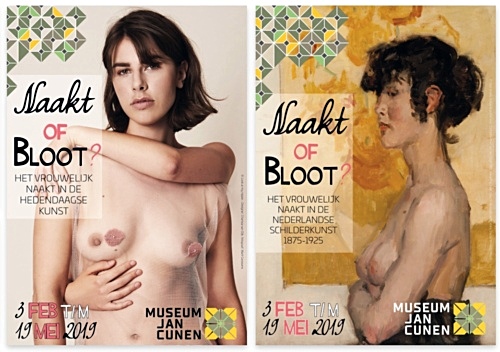
Naakt of bloot? Het vrouwelijk naakt in de Nederlandse schilderkunst 1875-1925
Naakt of bloot? Het vrouwelijk naakt in de hedendaagse kunst
Naakt of bloot? Deze vraag vormt de rode draad van de tentoonstellingen Naakt of bloot? Het vrouwelijk naakt in de Nederlandse schilderkunst 1875-1925 en Naakt of bloot? Het vrouwelijk naakt in de hedendaagse kunst in Museum Jan Cunen (3 februari tot en met 19 mei 2019). Naakten van George Hendrik Breitner, Isaac Israels en Jan Sluijters gaan een dialoog aan met werk van hedendaagse kunstenaars als Lita Cabellut, Bart Hess en Carla van de Puttelaar. Het museum voelt zich geroepen om de tegenstelling die in de huidige samenleving ten aanzien van naakt is ontstaan, zichtbaar en bespreekbaar te maken. Want waar we aan de ene kant krampachtig en preuts omgaan met bloot, worden we er aan de andere kant voortdurend mee overladen.
Naakt of bloot, wat is eigenlijk het verschil? Bij het kijken naar kunst blijkt er een subtiele scheidslijn te zijn tussen deze twee begrippen. ‘Bloot’ betekent ‘zonder kleren zijn’, een toestand die vaak samengaat met een gevoel van schaamte, zowel voor degene die kijkt als voor degene naar wie gekeken wordt. ‘Naakt’ verwijst naar een natuurlijke of artistieke vorm van naaktheid die niet tot verlegenheid stemt. Beide termen zijn echter subjectief. Wat de één als naakt ziet, ervaart een ander als bloot. Wat is voor jou het verschil? Waar trek jij de grens?
De exposities in Museum Jan Cunen roepen de vraag op of de kijk op naakt tussen pakweg 1875 en 1925 eigenlijk wel zo anders is dan tegenwoordig. In de media worden we voortdurend geconfronteerd met bloot, terwijl de omgang daarmee een stuk gevoeliger ligt dan enkele decennia geleden. Terwijl het internet tot in extremen toegang geeft tot alle vormen van bloot, wordt een vrouwentepel stelselmatig verwijderd van social media. Een tendens die raakvlakken heeft met de dubbele moraal in de late negentiende eeuw: enerzijds werd de maatschappij destijds gekenmerkt door kuisheid en preutsheid, anderzijds werd er op zedelijk gebied vaak een oogje dichtgeknepen. ‘Wat je niet ziet, bestaat niet’ lijkt opnieuw onderdeel van de tijdgeest.
Museum Jan Cunen wil de tegenstelling die in de huidige samenleving ten aanzien van naakt is ontstaan, zichtbaar en bespreekbaar maken en onomwonden de schoonheid van het naakte lichaam vieren. Om overeenkomsten en verschillen bloot te leggen tussen de oude en nieuwe ideeën over het vrouwelijk naakt, gaat de kunst uit het einde van de negentiende en het begin van de twintigste eeuw een dialoog aan met kunstwerken van hedendaagse kunstenaars. Werk van vooraanstaande Nederlandse meesters als George Hendrik Breitner, Isaac Israels, Jan Sluijters en Jan Wiegers worden getoond in combinatie met werk van hedendaagse kunstenaars Lita Cabellut, Bart Hess, Carla van de Puttelaar, Viviane Sassen en Isabelle Wenzel. Ook wordt podium geboden aan vier jonge talenten: Charissa van Dijk, Margherita Soldati, Mariëlle Veldhuis en Meret Zimmermann. Zo koppelt het museum de blik van ruim een eeuw geleden aan de actuele discussie over het naakt in de beeldende kunst en de huidige maatschappelijke positie van het naakt. De vergelijking tussen toen en nu biedt een andere kijk op de eigen tijd en plaatst onze omgang met het blote lichaam in een breder perspectief.
Naakt of bloot? Het vrouwelijk naakt in de Nederlandse schilderkunst 1875-1925
Naakt of bloot? Het vrouwelijk naakt in de hedendaagse kunst
3 februari t/m 19 mei 2019
Museum Jan Cunen
Molenstraat 65
5341 GC Oss
T: (0412) 798 000
E: info@museumjancunen.nl
# Meer informatie op website Museum Jan Cunen Oss
• fleursdumal.nl magazine
More in: Art & Literature News, Erotic literature, Exhibition Archive, FDM Art Gallery, Natural history, The Ideal Woman
A deliciously diverse anthology of essays, stories, poems, and graphic memoirs, where writers explore the deeply human act of kissing.
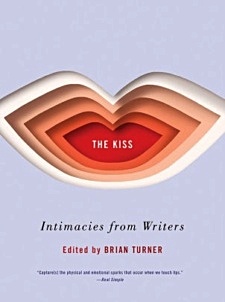 Kisses from Nick Flynn, Rebecca Makkai, Pico Iyer, Ilyse Kusnetz, Andre Dubus III, Christian Kiefer, Camille T. Dungy, Major Jackson, Bich Minh Nguyen, Terrance Hayes, Ada Limón, Honor Moore, Téa Obreht and Dan Sheehan, Kazim Ali, Beth Ann Fennelly, and others.
Kisses from Nick Flynn, Rebecca Makkai, Pico Iyer, Ilyse Kusnetz, Andre Dubus III, Christian Kiefer, Camille T. Dungy, Major Jackson, Bich Minh Nguyen, Terrance Hayes, Ada Limón, Honor Moore, Téa Obreht and Dan Sheehan, Kazim Ali, Beth Ann Fennelly, and others.
In this wide-ranging collection of essays, stories, graphic memoir, and cross-genre work, writers explore the deeply human act of kissing, and share their thoughts on a specific kiss—the unexpected and unforgettable, the sublime and the ambiguous, the devastating and the regenerative. Selections from beloved authors “tantalize with such grace that they linger sweetly in your mind for days” (New York Times Book Review), as they explore the messy and complicated intimacies that exist in our actual lives, as well as in the complicated landscape of the imagination.
This is a book meant to be read from cover to cover, just as much as it’s meant to be dipped into—with each kiss pulling us closer to the moments in our lives that matter most.
From Sioux Falls to Khartoum, from Kyoto to Reykjavik; from the panchayat forests of India to the Giant’s Causeway on the coast of Northern Ireland; in taxis and at bus stops, in kitchens and sleigh beds, haystacks and airports around the globe—people are kissing one another.
The sublime kiss. The ambiguous kiss. The devastating kiss. The kiss we can’t take back. The kiss we can never give. The kiss that changes a life. In this anthology, writers and thinkers share their thoughts on a specific kiss—the unexpected and unforgettable—in an attempt to bridge the gulf, to connect us to one another on a deeply human level, and to explore the messy and complicated intimacies that exist in our actual lives, as well as in the complicated landscape of the imagination.
Sparked and developed from a series curated for Guernica by editor Brian Turner, this is a book meant to be read from cover to cover, just as much as it’s meant to be dipped into—with each kiss pulling us closer to the moments in our lives that matter most.
Brian Turner is the author of the memoir My Life as a Foreign Country and the poetry collections Here, Bullet and Phantom Noise. He directs the low-residency MFA at Sierra Nevada College. The Kiss was conceived with his late wife, the acclaimed poet Ilyse Kusnetz, to whom it is dedicated. It was developed from a series he curated for Guernica.
Contributors: Kim Addonizio – Kazim Ali – J. Mae Barizo – Laure-Anne Bosselaar – Kurt Brown – Nickole Brown – Benjamin Busch – Brian Castner – Tina Chang – Steven Church – Adam Dalva – Mark Doty – Andre Dubus III – Camille T. Dungy – Martín Espada – Dave Essinger – Siobhan Fallon – Beth Ann Fennelly – Nick Flynn – Kimiko Hahn – Cameron Dezen Hammon – Terrance Hayes – Pico Iyer – Major Jackson – Lacy M. Johnson – Christian Kiefer – Matthew Komatsu – Ilyse Kusnetz – Ada Limón – Rebecca Makkai – John Mauk – Christopher Merrill – Philip Metres – Kathryn Miles – Dinty W. Moore – Honor Moore – Aimee Nezhukumatathil – Bich Minh Nguyen – Téa Obreht – Kristen Radtke – Suzanne Roberts – Roxana Robinson – Schafer John c – Dan Sheehan – Tom Sleigh – Patricia Smith – Ira Sukrungurang – Christopher Paul Wolfe – Sholeh Wolpé
The Kiss:
Intimacies from Writers
by Brian Turner (Editor)
Paperback
Pages: 256
ISBN-13: 9780393356885
Publisher: Norton, W. W. & Company, Inc.
Available in paperback on February 12, 2019
$15.71
# New books
The Kiss:
Intimacies from Writers
• fleursdumal.nl magazine
More in: - Book Lovers, - Book Stories, - Bookstores, Archive S-T, Art & Literature News, Invisible poetry, Natural history

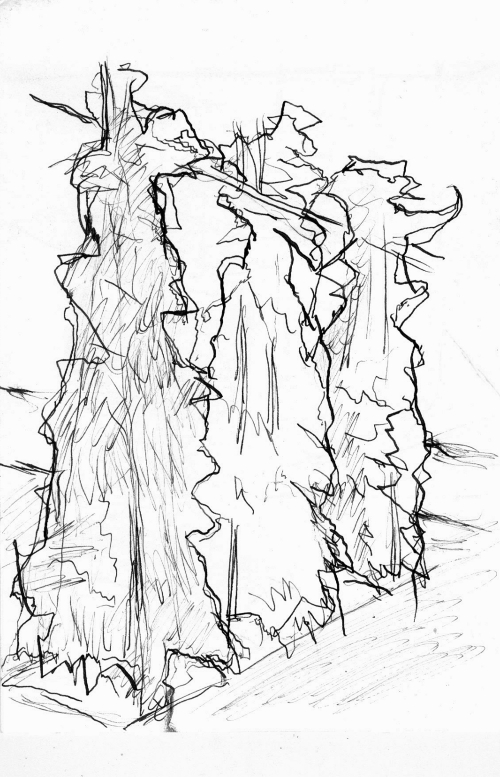
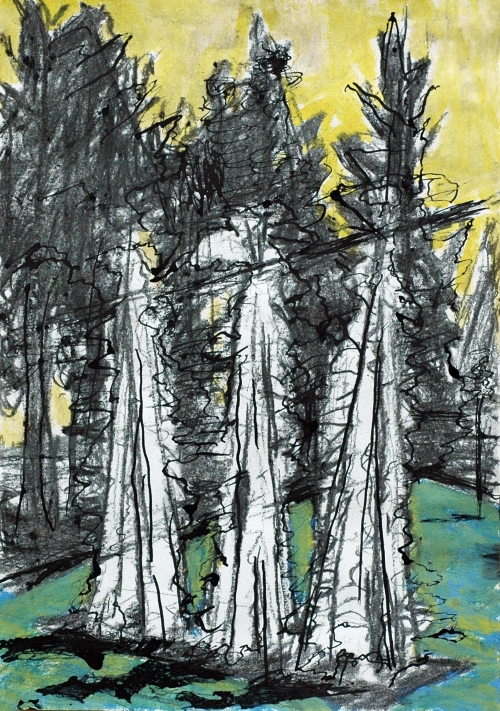
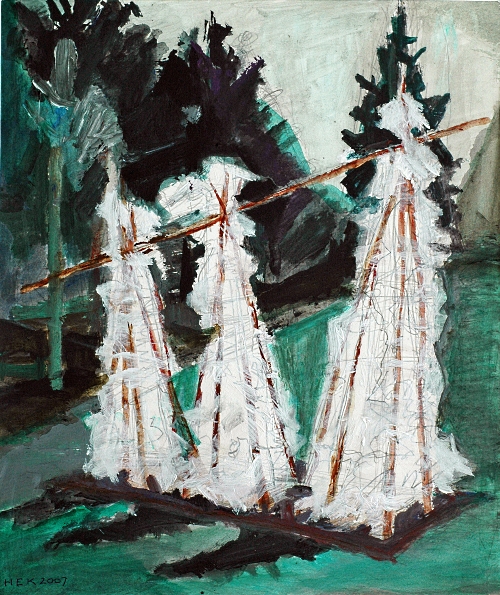
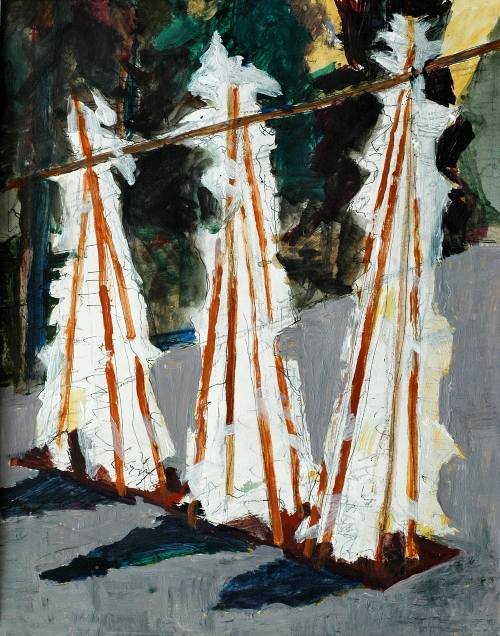
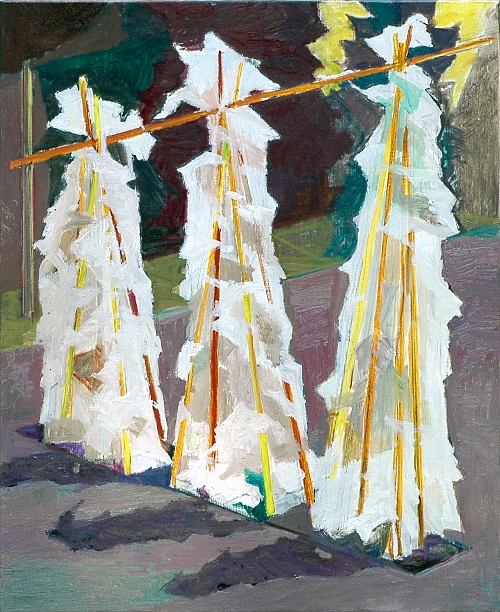
Hans Ebeling Koning
Vegetation II
Hans Ebeling Koning (1931) received his education at AKI in Enschede where he later became a teacher in drawing and painting. His work is represented in many public and private collections including Museum Henriette Polak in Zutphen, Rijksmuseum Twente and the Museum of Modern Art in Arnhem.
# More work of on Hans Ebeling Koning website
Hans Ebeling Koning ©
• fleursdumal.nl magazine
More in: Art & Literature News, Dutch Landscapes, FDM Art Gallery, Hans Ebeling Koning, Natural history
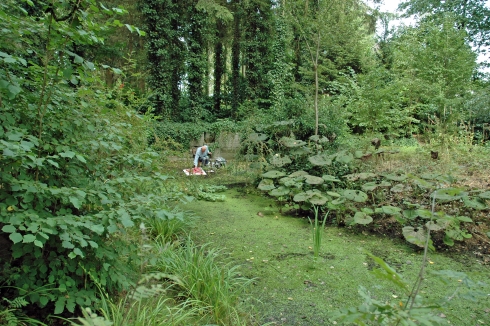





Hans Ebeling Koning
Vegetation (I)
Hans Ebeling Koning (1931) received his education at AKI in Enschede where he later became a teacher in drawing and painting. His work is represented in many public and private collections including Museum Henriette Polak in Zutphen, Rijksmuseum Twente and the Museum of Modern Art in Arnhem.
# More work of Hans Ebeling Koning on website http://www.hansebelingkoningklooit.today/
Hans Ebeling Koning ©
• fleursdumal.nl magazine
More in: Art & Literature News, Dutch Landscapes, FDM Art Gallery, Hans Ebeling Koning, Natural history
Maartje Korstanje staat als mens en als kunstenaar in nauw contact met de natuur. Voor Korstanje ligt de schoonheid niet enkel in de perfectie van de natuur, maar in de kringloop van het leven. Het samenspel tussen leven en verval, waar groei en aftakeling deel uitmaken van de onomkeerbare fases van het leven, waarin het één niet zonder het ander kan bestaan.
In het proces van aftakeling toont zich tevens de schoonheid van het ongeschonden leven. Het contrast tussen aftakeling en het nog niet aangedane fascineert Korstanje mateloos. Alsof je pas kunt zien hoe mooi iets wàs, wanneer het aangevreten door de tijd, al gedeeltelijk weg geknabbeld is.
Veel mensen herkennen de schoonheid van de herfst: het fel rood en geel van een blad en de prachtige kleuren en vormen binnen een diversiteit aan paddenstoelen en schimmels. De afbraak zie je in zijn volle glorie: een noodzakelijk proces om bouwstoffen te leveren voor nieuw leven. De paddenstoelen en schimmels verschijnen als onverwacht gasten in de natuur. Deze wonderlijk mooie organismen kunnen enkel leven op een oudere drager, die als voedingsbodem dient voor het nieuwe wat zich erin nestelt. Korstanje houdt net zo veel van die oude drager als van de ‘Unexpected Guests’.
Zoals de natuur haar producten recyclet, zo kiest Korstanje een simpel materiaal als karton dat zij recyclet tot bouwmateriaal voor haar beelden. Het is niet alleen goedkoop en overal aanwezig, maar heeft ook het voordeel van een natuurlijke uitstraling. Door vloeibare lijm aan het karton toe te voegen wordt het tot karton-maché ; een substantie, die haar in staat stelt op een directe manier, met haar handen, te bouwen en te vormen.
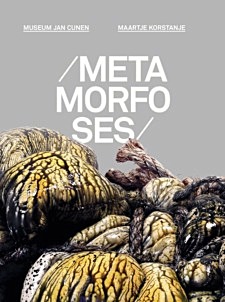 Deze manier van beeldhouwen vergt veel tijd. Delen worden verwijderd wanneer het teveel oogt, of er wordt, laag over laag, meer materiaal aan toegevoegd. Vergelijkbaar met het groeiproces in de natuur, groeit het beeld in volume.
Deze manier van beeldhouwen vergt veel tijd. Delen worden verwijderd wanneer het teveel oogt, of er wordt, laag over laag, meer materiaal aan toegevoegd. Vergelijkbaar met het groeiproces in de natuur, groeit het beeld in volume.
In dit werkproces is een overeenkomst te vinden tussen het verloop van de natuurlijke processen, zoals groei en verval, constructie en deconstructie en het creëren van een beeld, dat een creatief groeiproces doormaakt. Korstanje blijft door de jaren heen trouw aan haar werkwijze en laat het werk langzaam evolueren. Hoewel ook door de ratio ingegeven ideeën haar inspireren, blijven intuïtie en verbeelding uiteindelijk de belangrijkste drijfveren.
Naast het plantaardige karton gebruikt ze materialen als purschuim en diverse kunststoffen, waarmee ze contrast aanbrengt in het werk. Onder de ‘gelooide’ kartonhuid verschijnt opeens een vlees-roze orgaanachtige vorm. Het is eng, maar toch mooi. Je kunt je ogen er niet vanaf houden.
Aanvankelijk maakt ze sculpturen die sterke associaties oproepen met dieren of dierlijke organismen. De prettig-aardse beelden laten je vrij associëren. Je lijkt het te herkennen, maar toch ook weer niet. Het is alsof je oog in oog staat met een organisme uit een pas ontdekte aardlaag, uit een ander tijdvak. Een prachtige vondst van een paleontoloog, die je in een wonderkamer mag aanschouwen..
Haar beelden hebben een grote uitdrukkingskracht, ze trekken aan en stoten af, het gruwelijke en het tedere gaan hand in hand. Door het vaak grote volume verhoudt de kijker zich ook lichamelijk met het beeld.
Tegenwoordig zoomt het werk thematisch in naar microscopisch niveau en wordt het tevens abstracter en minder letterlijk te herleiden naar een bepaalde dierlijke of plantaardige oorsprong. Deze ontwikkeling wordt ingegeven door de kennismaking in 2014 met een nieuwe techniek, het machinaal borduren.
Op uitnodiging van het TextielMuseum in Tilburg wordt Korstanje gevraagd een beeld te maken voor de collectie. De fijne techniek van het borduren nodigt uit om het thema groei en verval dit keer onderhuids te onderzoeken. Ze start op de borduur-afdeling een onderzoek op naar virussen, bacteriën en kankercellen en zet dit om in borduurwerk. Uiteindelijk wordt er gekozen om een patroon geënt op het influenzavirus te borduren op een oud roestig zeildoek wat geïncorporeerd werd in een holle sculptuur van karton.
De beelden hebben er nu een dimensie bijgekregen door het grovere materiaal te combineren met een fijner dradenweefsel. Hoewel Korstanje altijd al fijnere bewerkingstechnieken toepaste op haar beelden, worden de werken nu letterlijk nog dichter op de huid gemaakt. De vrouwelijke factor van de fijne draadtechniek wordt toegevoegd aan het construerende zwaardere werk.
In 2015 vervolgt Korstanje haar onderzoek naar traditioneel handwerk in India, waar ze o.a. de Kantha borduurtechniek bestudeert. De verworven vaardigheden past ze toe in een nieuwe werkwijze.
In 2016 woont en werkt Korstanje een heel jaar in New York. In een atelier zonder geavanceerde machines of gereedschap, kwam het onderzoek naar handwerk in India goed van pas. Zoals gebruikelijk , werkt ze veel met karton en papier-maché, wat samen met andere voorwerpen verwerkt word tot vrije associaties bij de dagelijkse ervaringen in de stad.
Op Manhattan en in Brooklyn bezoekt ze plaatsen waar water en land elkaar ontmoeten. Ze zoekt het spanningsveld op, waar natuur en door de mens gemaakte constructies elkaar ontmoeten en langzaam vergaan door de elementen en de tijd. Zo baseert ze een aantal werken op de instortende houten pieren en de eroderende bruggen met enorme roestgaten.
Terug in Nederland in het eigen atelier borduurt ze vormen gebaseerd op schimmeldraden, die vergelijkbaar met het netwerk van paddenstoelen, uit de grond opkomen. De sculpturen die in deze periode ontstaan, dienen als basis voor een residency, eind 2017 bij MIET AIR in Beers, waar kunstenaars het totale proces van het traditionele cire-perdue bronsgieten onder de knie kunnen krijgen.
De met deze techniek ontstane bronzen vormen verwerkt Korstanje vervolgens in sculpturen die geleidelijk aan, op dezelfde manier als schimmels, organisch verder groeien. Ze vormen een onderdeel van een groter geheel, afhankelijk van de ouder ogende drager. Korstanje maakt hiermee een verrassende stap. Het traditionele materiaal brons, doorgaans gebruikt om een beeld van vergankelijk materiaal te bestendigen voor de eeuwigheid, is slechts onderdeel van de sculptuur, waar karton toch weer de drager is. Ze vormen samen een biotoop, vergankelijkheid en eeuwigheid, samengebonden in co-existentie.
Het Stedelijk Museum Kampen heeft met deze tentoonstelling een primeur in Nederland, waarin veel nieuwe werken zijn te zien, die zijn ontstaan uit Korstanjes nieuw verworven vaardigheden en werkwijzen.
Maartje Korstanje (Goes 1982) studeerde aan de Akademie voor Kunst en Vormgeving / St. Joost, Breda en het Sandberg Instituut in Amsterdam (MFA). Ze was één van de winnaars van de Prix de Rome in 2007, deed residency programma’s bij Kunsthuis SYB (2007), IBB Curacao, (2008), het Europees Keramisch Werk Centrum (2013), Calcutta Art & Research Foundation, India (2015) en International Studio & Curatorial Program New York (2016). In 2014 werd ze genomineerd voor de Volkskrant Beeldende Kunstprijs. Haar werk is gepresenteerd in groepstentoonstellingen in onder andere GEM, Den Haag, Museum de Pont, Tilburg, Hudson Valley Center for Contemporary Art, New York, ISCP, New York en Marc Straus Gallery, New York. Ze had solotentoonstellingen bij onder andere Upstream Gallery, de Vleeshal, Zeeuws Museum, Museum Jan Cunen en het Groninger Museum. / Alle werken in de tentoonstelling zijn ontstaan met genereuze steun van het Mondriaan Fonds.
Routebeschrijving Stedelijk Museum Kampen: Het Stedelijk Museum Kampen is zowel met het openbaar vervoer als met de auto goed bereikbaar. / Adres: Oudestraat 133, 8261 CK Kampen
# meer informatie op website stedelijk museum kampen
# meer informatie op website maartje korstanje
Maartje Korstanje
Unexpected Guests
15 december 2018 t/m 3 februari 2019
Voormalige Synagoge Kampen
# expo maartje korstanje
Unexpected Guests / sculptures
# fleursdumal.nl magazine
More in: Art & Literature News, Dutch Landscapes, Exhibition Archive, FDM Art Gallery, Maartje Korstanje, Natural history, Sculpture, Spurensicherung
Großes Humboldt-Gedenken 2018/2019: bibliophiler Prachtband.
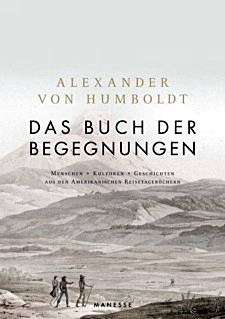 Wagemut und Wissbegier, ein feines Beobachtungs- und Differenzierungsvermögen und vor allem die unbändige Lust an immer neuen Begegnungen machten Alexander von Humboldt vor 200 Jahren zu einem epochalen Weltentdecker.
Wagemut und Wissbegier, ein feines Beobachtungs- und Differenzierungsvermögen und vor allem die unbändige Lust an immer neuen Begegnungen machten Alexander von Humboldt vor 200 Jahren zu einem epochalen Weltentdecker.
«Das Buch der Begegnungen», das die emphatischsten Zeugnisse aus den «Amerikanischen Reisetagebüchern» versammelt, zeigt einen warmherzigen Menschen ohne Berührungsängste. Auf seiner Reise in die amerikanischen Tropen von 1799 bis 1804 hielt der preußische Kosmopolit eine Vielzahl exotischer Physiognomien fest und sah die Welt, wie sie vor ihm noch keiner gesehen hatte. Als einer der ersten Europäer überhaupt kritisierte er Kolonialismus, Sklavenhandel und christlichen Bekehrungseifer.
Dagegen betonte er die Würde und den kulturellen Reichtum vermeintlich primitiver Völker. Überzeugt davon, dass es keine unterlegenen oder gar minderwertigen Ethnien gebe, war er seinen Zeitgenossen weit voraus. Und selbst im 21. Jahrhundert kommt Alexander von Humboldt als Anwalt einer universellen Humanität wie gerufen.
Bibliophiler Prachtband: gebunden in bedrucktes Leinen, zweifarbig gedruckt, fadengeheftet, mit farblich abgestimmtem Lesebändchen, gestaltetem Vorsatz sowie Originalillustrationen Alexander von Humboldts.
Ottmar Ette ist Professor für Romanistik an der Universität Potsdam und gehört zu den führenden Experten zu Humboldts Werk. Er leitete das Forschungsprojekt zur Auswertung von Humboldts Amerikanischen Reisetagebüchern.
Alexander von Humboldt (1769–1759), deutscher Universalgelehrter und Expeditionsreisender von internationalem Renommee, machte als Pionier diverser naturwissenschaftlicher Fachdisziplinen von sich reden: von der Botanik und Zoologie über die Klimatologie bis hin zur Astronomie. Seit seiner Amerikanischen Forschungsreise 1799-1804 gilt er als «wissenschaftlicher Wiederentdecker Amerikas» und Mitbegründer der empirisch fundierten Geographie. Doch auch als Ethnologe, Kulturtheoretiker und couragierter Humanist war er seiner Mitwelt weit voraus.
Alexander von Humboldt, Ottmar Ette (Hrsg.)
Das Buch der Begegnungen
Menschen – Kulturen – Geschichten aus den Amerikanischen Reisetagebüchern
Gebundenes Buch, Leinen,
416 Seiten,
17,0 x 24,0 cm
mit ca. 10 Abb.
ISBN: 978-3-7175-2444-1
€ 45,00
Verlag: Manesse
Erscheinungstermin: 25. Juni 2018
new books
fleursdumal.nl magazine
More in: - Book Lovers, - Book Stories, Archive G-H, Department of Birds of Prey, Illustrators, Illustration, Natural history
‘En toch is alles wat we doen natuur’ bevat de mooiste natuurgedichten van dichter-tekenaar-bioloog Leo Vroman.
 Vroman was gefascineerd door het leven in en rondom ons, dat hij tot in de wonderbaarlijkste details observeerde en beschreef.
Vroman was gefascineerd door het leven in en rondom ons, dat hij tot in de wonderbaarlijkste details observeerde en beschreef.
Tientallen bundels speelse poëzie schreef hij, een onuitputtelijke stroom gedichten van 1946 tot 2014, het jaar van zijn overlijden.
Mirjam van Hengel (auteur van het succesvolle Hoe mooi alles, over Leo en Tineke Vroman) maakte een nieuwe, ruime selectie uit de gedichten die Vroman schreef over de natuur – die van mensen, die van gras, bloemen en bomen, van orkanen en organen en van alle mogelijke dieren.
Leo Vroman (1915-2014) was dichter, prozaïst, essayist, illustrator en hematoloog. Hij studeerde biologie in Utrecht en vluchtte in 1940 naar Nederlands-Indië. In 1945 werd hij uit Japanse gevangenschap bevrijd en vestigde zich in Verenigde Staten, samen met zijn vrouw Tineke. Vroman debuteerde in 1946 met de bundel Gedichten. Vroman ontving in de loop van zijn leven zowat alle belangrijke literaire prijzen die er zijn. In 2006 verscheen het dagboek Misschien tot morgen.
En toch is alles wat we doen natuur
De mooiste gedichten over het leven in en rondom ons
Auteur: Leo Vroman
Redactie: Mirjam van Hengel
Uitgeverij: Querido
Hardcover
Taal: Nederlands
Afmetingen: 31x223x142 mm
Gewicht:481,00 gram
Verschijningsdatum: 6 maart 2018
Druk 1
ISBN10 902140902X
ISBN13 9789021409023
Prijs: € 24,99
# Voor meer informatie ga naar de website: www.vromanfoundation.com
new books
fleursdumal.nl magazine
More in: Archive U-V, Archive U-V, Art & Literature News, Natural history, Vroman, Leo
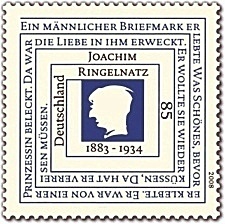
Joachim Ringelnatz
Seepferdchen
Als ich noch ein Seepferdchen war,
Im vorigen Leben,
Wie war das wonnig, wunderbar,
Unter Wasser zu schweben.
In den träumenden Fluten
Wogte, wie Güte, das Haar
Der zierlichsten aller Seestuten,
Die meine Geliebte war.
Wir senkten uns still oder stiegen,
Tanzten harmonisch umeinand,
Ohne Arm, ohne Bein, ohne Hand,
Die Wolken sich in Wolken wiegen.
Sie spielte manchmal graziöses Entfliehn,
Auf daß ich ihr folge, sie hasche,
Und legte mir einmal im Ansichziehn
Eierchen in die Tasche.
Sie blickte traurig und stellte sich froh,
Schnappte nach einem Wasserfloh
Und ringelte sich
An einem Stengelchen fest und sprach so:
Ich liebe dich!
Du wieherst nicht, du äpfelst nicht,
Du trägst ein farbloses Panzerkleid
Und hast ein bekümmertes altes Gesicht,
Als wüßtest du um kommendes Leid.
Seestütchen! Schnörkelchen! Ringelnaß!
Wann war wohl das?
Und wer bedauert wohl später meine restlichen Knochen?
Es ist beinahe so, daß ich weine –
Lollo hat das vertrocknete, kleine
Schmerzverkrümmte Seepferd zerbrochen.
Joachim Ringelnatz
(1883 – 1934)
Seepferdchen
fleursdumal.nl magazine
More in: Archive Q-R, Joachim Ringelnatz, Natural history
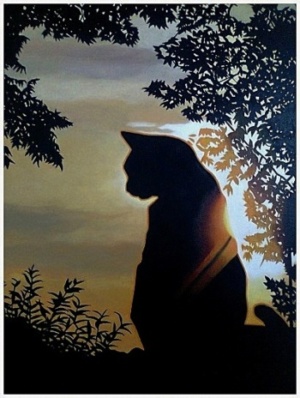
Vincent Berquez©: Cat in dusk
Vincent Berquez is a London–based artist and poet. He has published in Britain, Europe, America and New Zealand. His work is in many anthologies, collections and magazine worldwide. Vincent Berquez was requested to write a Tribute as part of ‘Poems to the American People’ for the Hastings International Poetry Festival for 9/11, read by the mayor of New York at the podium. He has also been commissioned to write a eulogy by the son of Chief Albert Nwanzi Okoluko, the Ogimma Obi of Ogwashi-Uku to commemorate the death of his father. Berquez has been a judge many times, including for Manifold Magazine and had work read as part of Manifold Voices at Waltham Abbey. He has recited many times, including at The Troubadour and the Pitshanger Poets, in London. In 2006 his name was put forward with the Forward Prize for Literature. He recently was awarded a prize with Decanto Magazine. Berquez is now a member of London Voices who meet monthly in London, United Kingdom.
Vincent Berquez has also been collaborating in 07/08 with a Scottish composer and US film maker to produce a song-cycle of seven of his poems for mezzo-soprano and solo piano. These are being recorded at the Royal College of Music under the directorship of the concert pianist, Julian Jacobson. In 2009 he will be contributing 5 poems for the latest edition of A Generation Defining Itself, as well as 3 poems for Eleftheria Lialios’s forthcoming book on wax dolls published in Chicago. He also made poetry films that have been shown at various venues, including a Polish/British festival in London, Jan 07.
As an artist Vincent Berquez has exhibited world wide, winning prizes, such as at the Novum Comum 88’ Competition in Como, Italy. He has worked with an art’s group, called Eins von Hundert, from Cologne, Germany for over 16 years. He has shown his work at the Institute of Art in Chicago, US, as well as many galleries and institutions worldwide. Berquez recently showed his paintings at the Lambs Conduit Festival, took part in a group show called Gazing on Salvation, reciting his poetry for Lent and exhibiting paintings/collages. In October he had a one-man show at Sacred Spaces Gallery with his Christian collages in 2007. In 2008 Vincent Berquez had a solo show of paintings at The Foundlings Museum and in 2011 an exposition with new work in Langham Gallery London.
fleursdumal.nl magazine for art & literature
More in: Berquez, Vincent, FDM Art Gallery, Natural history, Vincent Berquez
 De Parelduiker pakt het thema van de Boekenweek op en stelt de vraag: hoezo natuur?
De Parelduiker pakt het thema van de Boekenweek op en stelt de vraag: hoezo natuur?
In dit themanummer naar aanleiding van de Boekenweek vier verhalen over schrijvers en kunstenaars die ieder een ‘andere’ kant van de natuur leerden kennen.
Joris van Casteren volgde de voetsporen van Gerard Bilders (1838-1865). In het vieze Amsterdam ging deze jonge schrijver en landschapsschilder op tragische wijze ten onder. Tot op zijn sterfbed, in een benauwd pand aan een stinkende gracht, hunkerde hij naar de natuur en het buitenleven.
Madelon de Keizer schrijft over Albert Verwey. Anders dan diens vriend Willem Kloos, die het bij de stad en zijn verlokkingen hield, koos Verwey na zijn huwelijk met Kitty van Vloten voor een leven dichter bij de natuur en stichtte met haar een gezin in een huis op een duin te Noordwijk. Zij zetten zich in voor het herstel van de band tussen mens en natuur, die door de verstedelijking teloor dreigde te gaan.
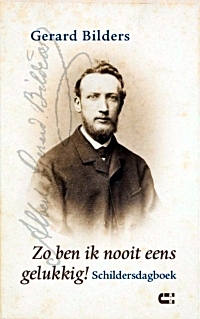 Nescio bezong, zo schrijft biografe Lieneke Frerichs, onbezorgd de schoonheid van zomerse glooiende korenvelden, terwijl hij met zijn dochters door Noord-Frankrijk fietste.
Nescio bezong, zo schrijft biografe Lieneke Frerichs, onbezorgd de schoonheid van zomerse glooiende korenvelden, terwijl hij met zijn dochters door Noord-Frankrijk fietste.
Willem van Toorn ten slotte zette zich op initiatief van kunstschilder Willem den Ouden in voor zorgvuldige, vernuftiger dijkverbeteringen die het Nederlandse rivierenlandschap zoveel mogelijk zouden sparen, aldus Marco Daane. Hij laat zien dat Van Toorns betrokkenheid hierbij ook sporen heeft achtergelaten in zijn literaire werk.
In memoriam Jaap Harten en Menno Wigman.
De Parelduiker is een uitgave van Uitgeverij Bas Lubberhuizen – Johannes Vermeerstraat 63 – 1071 DN Amsterdam – Postbus 15511 – 1001 NA Amsterdam – T 020 5706 100
# Voor meer informatie zie de website van de parelduiker
boekenweek 2018
fleursdumal.nl magazine
More in: Art & Literature News, Boekenweek, LITERARY MAGAZINES, Natural history, Wigman, Menno, Willem van Toorn
The year 1818 saw the publication of one of the most influential science-fiction stories of all time.
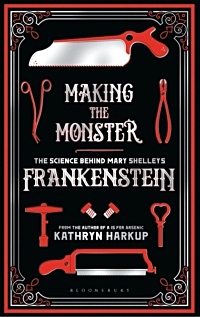 Frankenstein: Or, Modern Prometheus by Mary Shelley had a huge impact on gothic horror and science-fiction genres, and her creation has become part of our everyday culture, from cartoons to Hallowe’en costumes. Even the name ‘Frankenstein’ has become a by-word for evil scientists and dangerous experiments. How did a teenager with no formal education come up with the idea for an extraordinary novel such as Frankenstein?
Frankenstein: Or, Modern Prometheus by Mary Shelley had a huge impact on gothic horror and science-fiction genres, and her creation has become part of our everyday culture, from cartoons to Hallowe’en costumes. Even the name ‘Frankenstein’ has become a by-word for evil scientists and dangerous experiments. How did a teenager with no formal education come up with the idea for an extraordinary novel such as Frankenstein?
Clues are dotted throughout Georgian science and popular culture. The years before the book’s publication saw huge advances in our understanding of the natural sciences, in areas such as electricity and physiology, for example. Sensational science demonstrations caught the imagination of the general public, while the newspapers were full of lurid tales of murderers and resurrectionists.
Making the Monster explores the scientific background behind Mary Shelley’s book. Is there any science fact behind the science fiction? And how might a real-life Victor Frankenstein have gone about creating his monster? From tales of volcanic eruptions, artificial life and chemical revolutions, to experimental surgery, ‘monsters’ and electrical experiments on human cadavers, Kathryn Harkup examines the science and scientists that influenced Shelley, and inspired her most famous creation.
Kathryn Harkup is a chemist and author. Kathryn completed a PhD then a postdoc at the University of York before realising that talking, writing and demonstrating science appealed far more than spending hours slaving over a hot fume-hood. Kathryn went on to run outreach in engineering, computing, physics and maths at the University of Surrey, which involved writing talks on science and engineering topics that would appeal to bored teenagers, and she is now a science communicator delivering talks and workshops on the quirky side of science.
Making the Monster
The Science Behind Mary Shelley’s Frankenstein
By: Kathryn Harkup
Published: 08-02-2018
Format: Hardback
Edition: 1st
Extent: 304 pp
ISBN: 9781472933737
Imprint: Bloomsbury Sigma
Illustrations: 11 black and white illustrations
Dimensions: 216 x 135 mm
£16.99
new books
fleursdumal.nl magazine
More in: - Book News, Archive G-H, Archive S-T, Archive S-T, Art & Literature News, Mary Shelley, Natural history, Percy Byssche Shelley, Shelley, Mary, Shelley, Percy Byssche, Tales of Mystery & Imagination
Thank you for reading Fleurs du Mal - magazine for art & literature